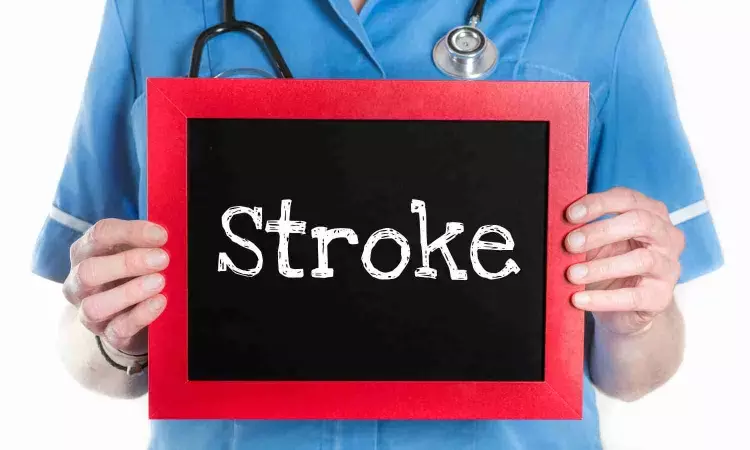- Home
- Medical news & Guidelines
- Anesthesiology
- Cardiology and CTVS
- Critical Care
- Dentistry
- Dermatology
- Diabetes and Endocrinology
- ENT
- Gastroenterology
- Medicine
- Nephrology
- Neurology
- Obstretics-Gynaecology
- Oncology
- Ophthalmology
- Orthopaedics
- Pediatrics-Neonatology
- Psychiatry
- Pulmonology
- Radiology
- Surgery
- Urology
- Laboratory Medicine
- Diet
- Nursing
- Paramedical
- Physiotherapy
- Health news
- Fact Check
- Bone Health Fact Check
- Brain Health Fact Check
- Cancer Related Fact Check
- Child Care Fact Check
- Dental and oral health fact check
- Diabetes and metabolic health fact check
- Diet and Nutrition Fact Check
- Eye and ENT Care Fact Check
- Fitness fact check
- Gut health fact check
- Heart health fact check
- Kidney health fact check
- Medical education fact check
- Men's health fact check
- Respiratory fact check
- Skin and hair care fact check
- Vaccine and Immunization fact check
- Women's health fact check
- AYUSH
- State News
- Andaman and Nicobar Islands
- Andhra Pradesh
- Arunachal Pradesh
- Assam
- Bihar
- Chandigarh
- Chattisgarh
- Dadra and Nagar Haveli
- Daman and Diu
- Delhi
- Goa
- Gujarat
- Haryana
- Himachal Pradesh
- Jammu & Kashmir
- Jharkhand
- Karnataka
- Kerala
- Ladakh
- Lakshadweep
- Madhya Pradesh
- Maharashtra
- Manipur
- Meghalaya
- Mizoram
- Nagaland
- Odisha
- Puducherry
- Punjab
- Rajasthan
- Sikkim
- Tamil Nadu
- Telangana
- Tripura
- Uttar Pradesh
- Uttrakhand
- West Bengal
- Medical Education
- Industry
Covert brain infarcts and white matter hyperintensities linked to increased fall risks: AHA

A new study published in the journal of Stroke showed that white-matter hyperintensity (WMH) abnormalities and hidden brain infarcts are revealed by CT and MR neuroimaging, and they seem to be linked to an increased risk of falls.
It is unknown how hidden cerebrovascular disease affects falls in the general population. Thus, to ascertain the time to a first fall after a concealed cerebrovascular disease was unintentionally discovered during a clinical neuroimaging event, Úna Clancy and colleagues carried out this investigation. With the exception of patients who had previously experienced a stroke or dementia, this study evaluated CT and MRI from 2009 to 2019 in patients over 50 who were enrolled with Kaiser Permanente Southern California.
Using natural language processing, this research was able to extract evidence of white matter hyperintensities/hypoattenuation (WMH) and incidental covert brain infarcts (CBI) from imaging data. Using Cox proportional hazards regression models that adjusted for 12 factors, such as age, sex, multimorbidity, ethnicity, polypharmacy, and incontinence, this research investigated the relationships between CBI and WMH and falls that required medical treatment.
Over a mean follow-up period of 3.04 years, this study evaluated 2,41,050 individuals with a mean age of 64.9 (SD, 10.42) years, 61.3% of whom were female, and 31.1% of whom had hidden cerebrovascular disease. During follow-up, 21.2% (51,239,241,050) experienced a reported decline. Individuals with both CBI and WMH had the greatest single fall incidence rate/1000 person-years (p-y) on CT (129.3 falls/1000 p-y [95% CI, 123.4–135.5]), followed by WMH (109.9 falls/1000 p-y [108.0–111.9]).
Both CBI and WMH had the greatest incidence rate on MRI (76.3 falls/1000 p-y [95% CI, 69.7–83.2]), with CBI coming in second (71.4 falls/1000 p-y [95% CI, 65.9–77.2]). In patients with CBI, the adjusted hazard ratio for a single index decline on CT was 1.13 (95% CI, 1.09–1.17), whereas on magnetic resonance imaging it was 1.17 (95% CI, 1.08–1.27). For mild (1.37 [95% CI, 1.32–1.43]), moderate (1.57 [95% CI, 1.48–1.67]), or severe WMH (1.57 [95% CI, 1.45–1.70]), the chance for a single index decline on CT rose progressively.
With increasing WMH severity on magnetic resonance imaging, the index fall risk also rose: mild WMH (1.11 [95% CI, 1.07–1.17]), moderate WMH (1.21 [95% CI, 1.13–1.28]), and severe WMH (1.34 [95% CI, 1.22–1.46]). Overall, both CBI and WMH are independently linked to increased chances of an index decline in a large population with neuroimaging.
Source:
Clancy, Ú., Puttock, E. J., Chen, W., Whiteley, W., Vickery, E. M., Leung, L. Y., Luetmer, P. H., Kallmes, D. F., Fu, S., Zheng, C., Liu, H., & Kent, D. M. (2025). Association of covert cerebrovascular disease with falls requiring medical attention. Stroke; a Journal of Cerebral Circulation. https://doi.org/10.1161/STROKEAHA.124.050137
Neuroscience Masters graduate
Jacinthlyn Sylvia, a Neuroscience Master's graduate from Chennai has worked extensively in deciphering the neurobiology of cognition and motor control in aging. She also has spread-out exposure to Neurosurgery from her Bachelor’s. She is currently involved in active Neuro-Oncology research. She is an upcoming neuroscientist with a fiery passion for writing. Her news cover at Medical Dialogues feature recent discoveries and updates from the healthcare and biomedical research fields. She can be reached at editorial@medicaldialogues.in
Dr Kamal Kant Kohli-MBBS, DTCD- a chest specialist with more than 30 years of practice and a flair for writing clinical articles, Dr Kamal Kant Kohli joined Medical Dialogues as a Chief Editor of Medical News. Besides writing articles, as an editor, he proofreads and verifies all the medical content published on Medical Dialogues including those coming from journals, studies,medical conferences,guidelines etc. Email: drkohli@medicaldialogues.in. Contact no. 011-43720751


